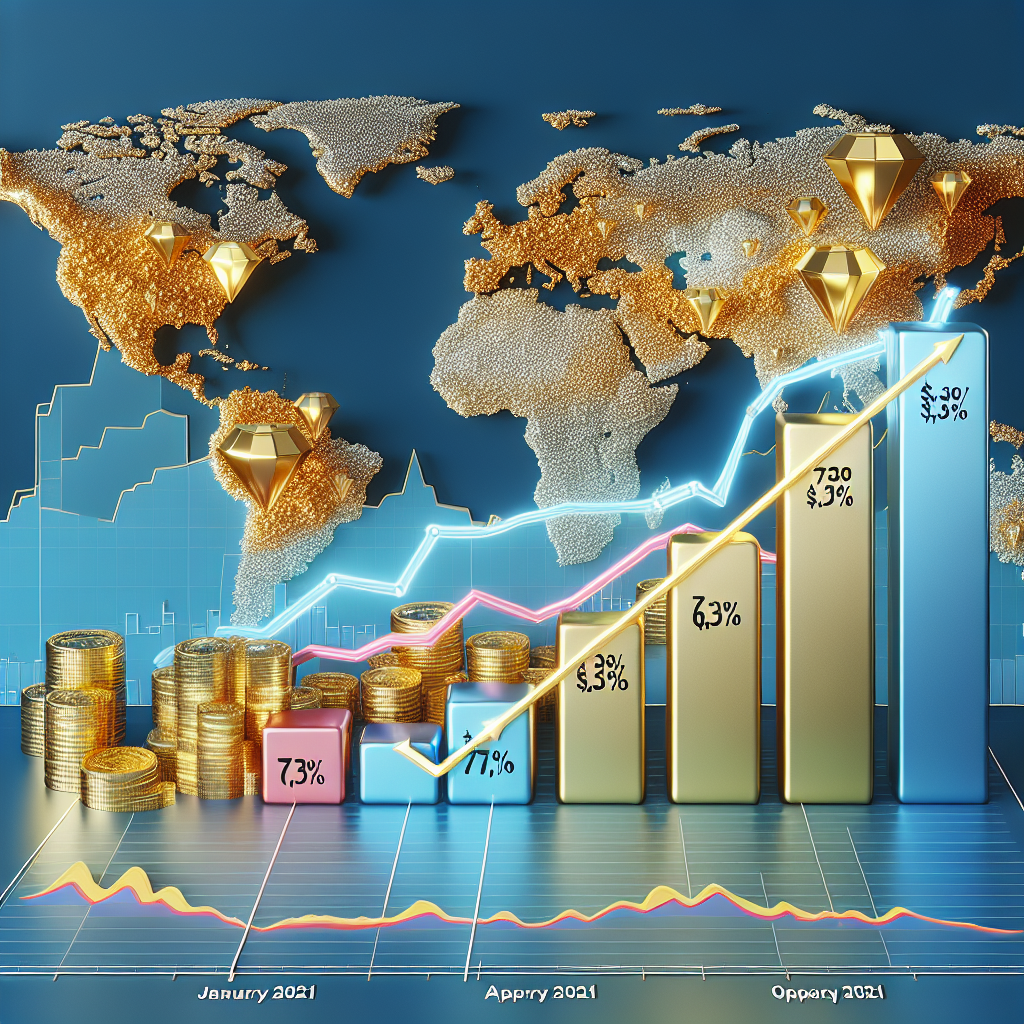Despite gold prices reaching a record $3,500 per ounce in April, China saw its highest import volume in nearly a year that month, soaring by 73%. Meanwhile, the country also hit its highest level of platinum imports in a year in April.
Customs data released on Tuesday (May 20) showed that China’s total gold imports in April reached 127.5 metric tons, marking the highest level in 11 months.
This growth occurred against the backdrop of gold prices continuously hitting historic highs, even briefly touching $3,500 per ounce.
In April, the People’s Bank of China allocated new import quotas to some commercial banks, which may have been one of the factors driving the increase in imports. This move aimed to respond to strong demand for the safe-haven asset gold from institutions and retail investors amid the trade war.
Amid tense global geopolitical situations and continued uncertainties in US-China trade relations, gold has met the demand for safe-haven assets, making it the best-performing major commodity this year. Due to concerns about the potential devaluation of the renminbi amid the US-China tariff war, more people believe that even after a significant rise in gold prices, there is a possibility for further increases. Goldman Sachs predicts that gold prices could reach $4,000 per ounce by the middle of 2026.
In May, the US-China trade tensions eased as the two countries agreed to lower tariffs for 90 days, leading to a slight decline in gold prices. However, central banks continued to buy gold to diversify their dollar-denominated assets, further supporting gold prices.
In addition to gold, platinum is also becoming increasingly popular. China saw its highest level of platinum imports in a year in April. The relative stability of this precious metal has increased its attractiveness.
China is the world’s largest consumer of platinum. Aside from being used in jewelry, analysts at Bloomberg Intelligence stated that platinum can also be employed in catalytic converters and laboratory equipment. It is expected that global demand for platinum will surpass supply in the remaining years of this decade. Data released on Tuesday showed that China imported a total of 11.5 tons of platinum in April.
Shuibei Market in Shenzhen is a major hub for jewelers, housing over 10,000 retailers. According to industry insider Yang Yang, the number of platinum retailers in the market doubled within a month.
Yang Yang’s company is one of the largest platinum retailers at the market, where she serves as the deputy general manager.
“Some gold workshops are now trying to capitalize on the surge in demand,” she said. “But the transition is not easy as the requirements for working with these two metals are vastly different.”
She added that platinum processing plants are struggling to keep up, and retailers are facing unprecedented waiting times, which have doubled.
The Wall Street Journal cited Edward Sterck, research director at the World Platinum Investment Council, who stated that compared to gold, platinum is a relatively newer player in the market. Platinum was only formally recognized in the 19th century because it was always found alongside other metals in ores and has a very high melting point. He further emphasized that the rarity of platinum is about 30 times that of gold. This also implies that investors are not as familiar with investing in platinum compared to gold.

